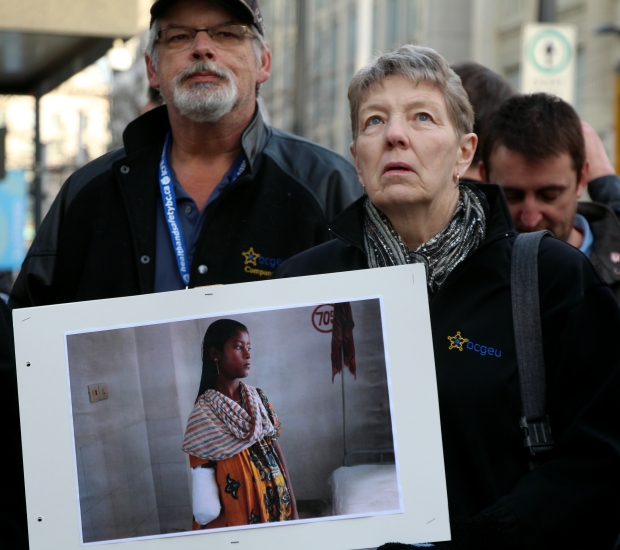UBC students passed a referendum to approve funding for a microbrewery earlier this year. Here’s what on-campus pubs and students have to say about the possibility of an on-campus microbrewery. By Tyler Hooper and I.
Escape rooms take over Vancouver
Escape room are the new thing popping up in locations around the Lower Mainland. But what are they all about and where did they come from? Jesse Lam and I explored Xcape in Richmond.
How closely do strangers really watch your stuff?
Students do it all the time. We ask strangers to watch our things for a few minutes so we can step away to grab a bite to eat or go to the washroom, just so you don’t lose your spot. But do you trust the people to actually watch your stuff?
The Voice decided to do an experiment courtesy of The Ubyssey newspaper to find out how people would react if they saw someone stealing from their fellow students.
Ho Sun Hing Printers in Chinatown closes its doors
Ho Sun Hing Printers, one of Chinatown’s last printing shops, closed its doors at the end of March after more than 100 years of business. I spoke to the shop’s 81-year-old owner about why they finally decided to shut down a little piece of Lower Mainland’s history.
PHOTO — Help Bangladesh now

VANCOUVER, B.C. NOV. 25, 2013 — More than 100 protesters descended on The Hudson’s Bay Company in downtown Vancouver calling on the retail giant to sign an agreement to improve working conditions in factories in Bangladesh in November 2013. The rally comes in response to the collapse of an eight-storey building in Bangladesh in April where more than 1,000 workers were killed and roughly 2,500 were injured.
STORY — Website design affects shoppers’ emotions, according to SFU professor
Website design affects shoppers’ emotions, according to SFU professor
Online shopping is skyrocketing among Canadians and companies are increasingly using specific website design elements to appeal to consumers’ emotions and encourage shoppers to return to the site, said a SFU professor.
In a survey by Statistics Canada, Canadians ordered $18.9 billion worth of products online in 2012, up 24 per cent from 2010.
Website design has a huge impact on the loyalty of consumers, said Dianne Cyr, a professor at SFU who specializes in web design and emotions.
Website design tries to evoke emotion
“The website design is really the interface between the product and the customer when you’re shopping . . . because there is no sales person,” said Cyr. “The only way that emotions can be elicited from a consumer is by creating the experience on the interface that excites people, satisfies them or they feel enjoyment from the site.”
Websites trying to elicit emotion from shoppers will have attractive, visually appealing layouts with pictures of people, and some form of interactivity such as comment boxes that fill shoppers with a sense of enjoyment.
Companies will use cool colours, such as blue and green, to elicit feelings of trust.
Shoppers also feel satisfied if the website is organized and is easy to navigate through product information and the checkout.
Tammy Chan, a Coquitlam resident, spends approximately $200 to $400 a month online on clothing and makeup from stores including Old Navy, Forever 21 and Banana Republic.
Bigger inventory one reason to buy online
“They have more items online then they carry in store,” said Chan. “Usually they run out of my size or they don’t have a certain colour in store.”
She noted that her ability to navigate a website is a big factor in determining if she will return to the site.
“For example, Old Navy — their site is straight to the point,” said Chan. “Once you click on clearance, they show the products right away.”
Cyr said a website’s ability to evoke emotions will have huge implications for the company.
“If even a small number of people go back to a website and visit it in the future, over time it can dramatically increase revenue for the company,” Cyr said.
PHOTO — Member of the Coalition against Smart Meters

VANCOUVER, B.C. — Lisa Schwabe, a member of the Coalition against Smart Meters, outside BC Hydro’s downtown offices in 2012. A small group of concerned citizens gathered outside BC Hydro’s corporate offices downtown to demand the right to choose between smart meters and current analog devices.
PHOTO — Occupy the Vatican in Vancouver

VANCOUVER, B.C. — Protesters from Occupy the Vatican marched from the Art Gallery to Holy Rosary Cathedral on Richards Street to peacefully protest the abuse of aboriginal children in Canadian residential schools between 1931 and 1996. The Knights of Columbus, a Catholic-sponsored group, prevented protesters from entering the cathedral. Occupy the Vatican is independent of Occupy Vancouver.